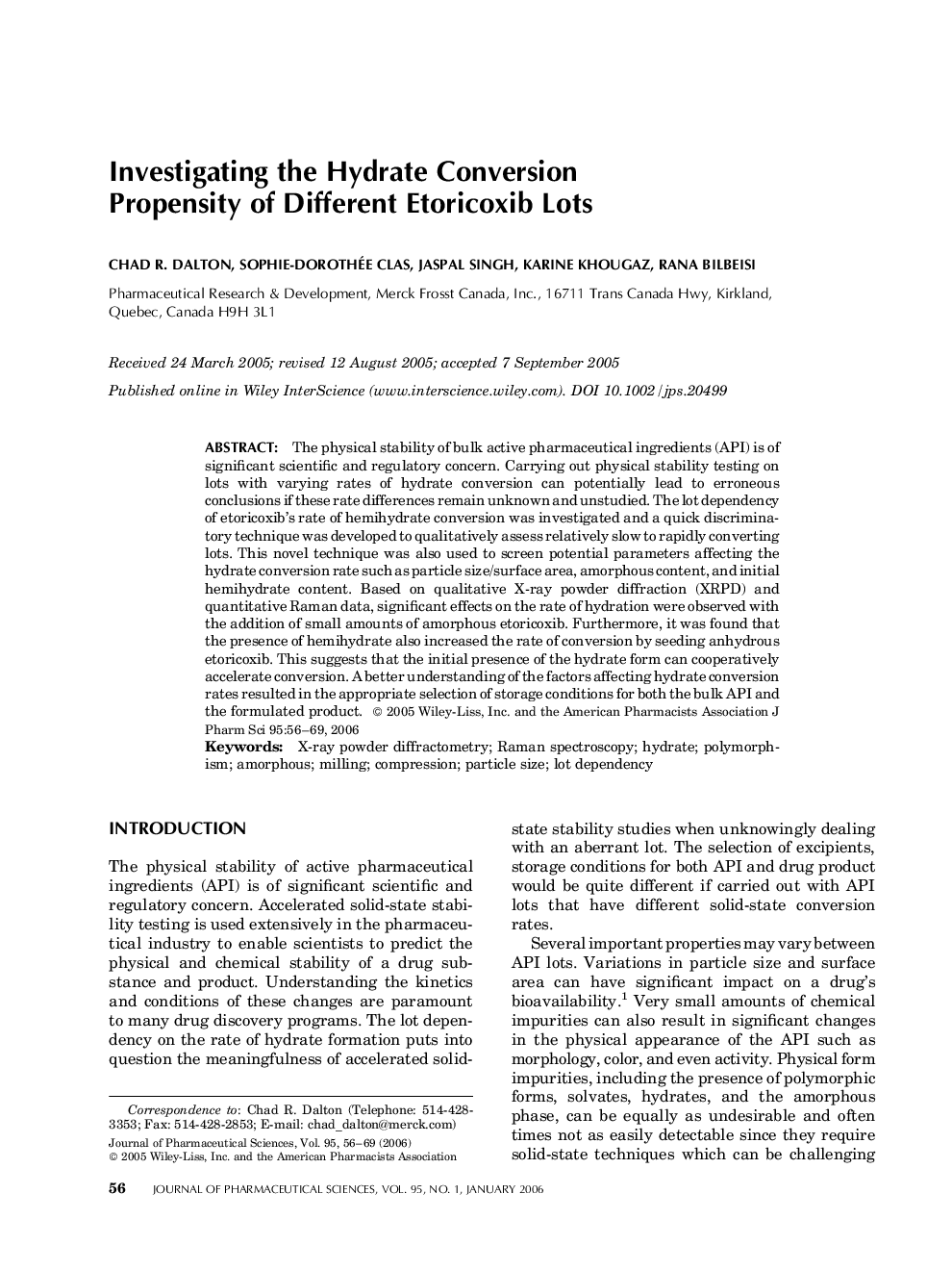| Article ID | Journal | Published Year | Pages | File Type |
|---|---|---|---|---|
| 2486301 | Journal of Pharmaceutical Sciences | 2006 | 14 Pages |
Abstract
The physical stability of bulk active pharmaceutical ingredients (API) is of significant scientific and regulatory concern. Carrying out physical stability testing on lots with varying rates of hydrate conversion can potentially lead to erroneous conclusions if these rate differences remain unknown and unstudied. The lot dependency of etoricoxib's rate of hemihydrate conversion was investigated and a quick discriminatory technique was developed to qualitatively assess relatively slow to rapidly converting lots. This novel technique was also used to screen potential parameters affecting the hydrate conversion rate such as particle size/surface area, amorphous content, and initial hemihydrate content. Based on qualitative X-ray powder diffraction (XRPD) and quantitative Raman data, significant effects on the rate of hydration were observed with the addition of small amounts of amorphous etoricoxib. Furthermore, it was found that the presence of hemihydrate also increased the rate of conversion by seeding anhydrous etoricoxib. This suggests that the initial presence of the hydrate form can cooperatively accelerate conversion. A better understanding of the factors affecting hydrate conversion rates resulted in the appropriate selection of storage conditions for both the bulk API and the formulated product. © 2005 Wiley-Liss, Inc. and the American Pharmacists Association
Keywords
Related Topics
Health Sciences
Pharmacology, Toxicology and Pharmaceutical Science
Drug Discovery
Authors
Chad R. Dalton, Sophie-Dorothée Clas, Jaspal Singh, Karine Khougaz, Rana Bilbeisi,
